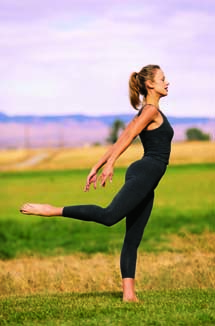How to treat them
Maintaining your overall fitness, both nutritionally and physically, is most essential to preventing varicose veins from developing. Adopting healthy habits is an important part of treating the discomforts related to varicose veins.

+ Different from other physical appearance and health problems, varicose veins are not part of the natural aging process. Studies have shown that varicose veins are more common in Western cultures, because of the common habits related to a modern on-the-go lifestyle. It's proven that a sedentary lifestyle and a Western diet (high in fat and refined carbohydrates) are harmful to health. The body doesn't function correctly and varicose veins are just a symptom of a wider range of health problems. Unhealthy habits are the main reason many people develop a range of physical and mental discomforts such as cellulitis, excess weight, back pains and stress. These ailments can be a sign that the body is strained by uncomfortable standing or sitting positions, uncomfortable clothes or ignoring the need to go to the bathroom, for example. Here is a list of tips for changing some of your lifestyle habits to enjoy a healthier body and mind:
∎ Keeping your weight under control. When your weight is excessive, it's best to go on a diet to lose weight. This will help to relieve the pressure on surface veins caused by excess weight.
∎ Include more fiber in your diet. A low-fiber diet can bring on constipation, which can cause varicose veins. It's been proven that pressure on the veins in the rectum when trying to go to the bathroom can transmit to the veins in the legs. Increasing the risk of varicose veins. The best natural way to avoid constipation is to improve your digestion by including foods high in fiber, such as whole grain cereals and fresh fruit and vegetables. Another important resource in preventing constipation is drinking at least eight glasses of water per day.

∎ Avoid high impact aerobics. High-impact aerobics, jogging, strenuous cycling or any intense activity may increase blood pressure in the legs and accentuate varicose veins.

COMPLEMENTARY THERAPIES
Natural treatments can provide relief from the discomfort of varicose veins, especially when used as complementary therapies to conventional medical treatment. You can also prevent varicose veins with the basic at-home treatment of various alternative remedies. Some of the most effective treatments:
- • Yoga.
- • Massages and self-massages.
- • Reflexology.
- • Hydrotherapy.
- • Fitotherapy.
- • Nutritional therapy.
∎ Use a good shoe. High heals and flat shoes without any support can complicate blood circulation. It's best to use a shoe that supports your feet. Ideally, your shoe should have a heal of 1½ in/3 to 4 cm.

∎ Changing your position. Sitting or standing for long periods of time can interfere with normal circulation, increasing the likelihood that varicose veins will develop, and can worsen existing varicosities. While at work, if you have to stay sitting or standing for long periods of time, try to change your position frequently or walk around for a few minutes.
∎ Put up your feet. To help the blood flow upward, from the veins in the feet to the heart, lift up your feet as high as you can before going to bed. It may be relieving to lie in bed with your feet up against the wall at a 70 to 90 degree angle; stay in this position for 15 to 20 minutes. You may find it soothing to sleep with your feet lifted a few inches from the bed (with a pillow over a wooden board for example), so that your blood flows properly in the legs during the night.

∎ Don't use tight clothing. Girdles and garter belts, for example, press on the body at key points on the thighs, complicating blood circulation.
∎ Use stockings. They apply the pressure that helps the blood flow from the ankles upward. This helps overall blood pressure.

∎ Avoid spicy, salty, fatty foods. These three types of food are harmful for the health and for the vein system in the legs, especially if you are already at risk of varicose veins because of hereditary factors.
∎ Don't expose your legs to direct heat. Heat affects blood circulation, especially when the veins are weakened. You should avoid placing your legs too close to heaters. Don't use hot wax or expose your legs to the sun at midday.
∎ Avoid birth control pills. Because of their hormonal content, birth control pills can be a factor in developing varicose veins; it's advised to avoid prolonged use of birth control pills and use other forms of birth control.

∎ Don't smoke. Smoking can increase your risk of developing varicose veins, because it leaves toxic residues that affect blood circulation.
∎ Don't cross your legs. Most circulatory veins and lymphatic ducts are found behind the knees. Sitting with your legs crossed places unnecessary pressure on the legs, making the problem worse.
CORRECT FOOT SUPPORT
When the foot is supported incorrectly (with flat feet for example) the blood doesn't circulate upward, giving a sensation of discomfort and pain in the legs, back and hips, especially when standing for long periods of time. Overtime, bad posture due to poor support on the soles of the feet can cause varicose veins. Using corrective sole supports can help prevent pain in the legs and back, as well as preventing varicose veins. However, you need to keep in mind that corrective sole supports are only effective when prescribed by a specialist, after a physical and foot examination. Your doctor can properly diagnose the problem and prescribe a corrective sole support.

Comment about this article, ask questions, or add new information about this topic: